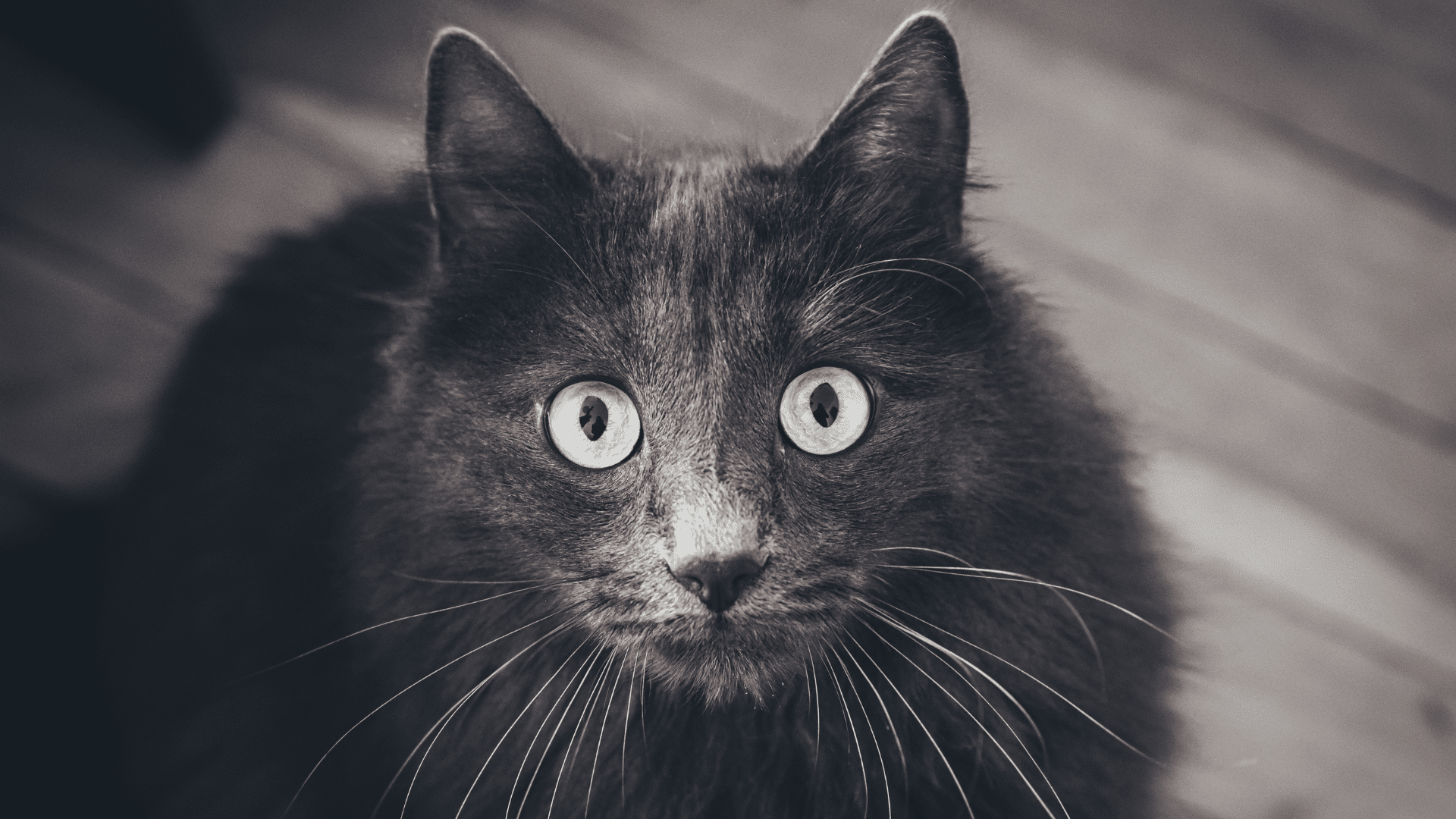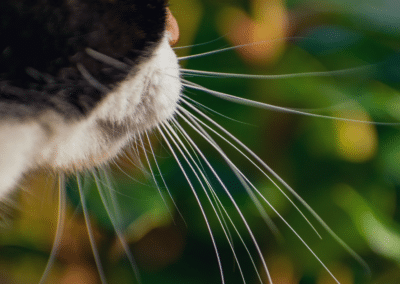Have you ever been gazing into your cat’s stunning reflective eyes and wondered how they see the world? Felines are known for their incredible ability to sniff out cat food, or become alert at the far-off vague sound, however, it’s hard not ponder other sensory questions like:
- Can cats see color?
- Can my cat see in the dark?
Similar to that of dogs, a cat’s vision is both stronger and much more limited when compared to our own. Below, we answer all your questions, dispel common myths, and describe what exactly your feline sees when they’re looking back at you.
Can Cats See Color?
For humans, cats, and all species, cone cells within the eye retina are light receptors that function best in bright light. Humans have roughly 10 times more cones in our retinas than that found in felines, showing that cats are color-blind in various colors, including red, pink, and purple. However, cats can see shades of blue and green in a dim saturation and richness. While felines aren’t fully color blind and can differentiate various colors, they perceive the color spectrum in a much more limited way than that of humans.
Can Cats See in the Dark?
While felines have less cones in their eye retinas than us, they do have much more rods. Rod cells are sensitive to light and help cats see roughly 8-times better than humans can in low light conditions. Rods also assist cats to detect objects moving at fast speeds as well as improve their sensitivity to movement. Cats also have a thin, reflective layer along the back of their eye called a Tapetum, which magnifies and reflects light in dark spaces like a mirror. Additionally, cats’ pupils have the ability to expand much wider than ours, thus allowing in more light.
What’s my Cat’s Eyesight?
When placing a toy in front of your cat, you may notice that they don’t notice it right away and, instead, use their sensitive whiskers to notice it. This is due to felines being mid-sighted, as they struggle to focus on both nearby and distant objects. Fortunately, cats have a sharp vision on mid-range objects. An average cat’s visual acuity ranges from 20/100 to 20/200, which means that a cat has to be 20 feet away from an object that a human can see between 100 and 200 feet away. While cats may see the world in a bit of a blur, they perceive a wider field of view that helps them spot approaching objects from the side. When we see the world at 180-degrees, a feline’s peripheral vision helps them see the world at 200-degrees.
Vision Problems in Senior Cats
Though felines depend on senses other than vision to experience the world, vision still plays a very important role in their quality of life. When senior cats have trouble seeing, it can lead to injuries and danger. Senior life brings on the decline in natural antioxidant production while oxidative stress, or the number of free radical attacks a cat undergoes, generally increases. This phenomenon contributes to the rapid aging, organ decline, and vision problems during a feline’s senior years. The 42 active ingredients in Dr. Bill’s Feline Health Defense support increases antioxidant production, free radical reduction, and lowers oxidative stress through cellular Nrf2 activation. Science has shown that fewer damaging free radicals over time promote improved eye health, vision, and enhanced physical fitness with the goal of the longest and healthiest life possible.
-
Feline Health Defense$16.00 — or subscribe and save 10%










0 Comments